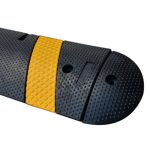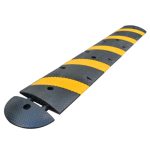Introduction to Wheel Stops
Wheel stops, also known as parking blocks or curb stops, are essential components in managing parking areas. They play a critical role in ensuring that vehicles are parked securely and that they do not roll into pedestrian walkways, other vehicles, or structures.
Benefits of Wheel Stops
There are numerous advantages to installing wheel stops in parking lots, including:
- Enhanced safety: Wheel stops help prevent accidents by ensuring that vehicles are parked securely.
- Organized parking: They define parking spaces clearly, making it easier for drivers to park their vehicles correctly.
- Protected structures: By stopping vehicles from rolling too far, they protect buildings, sidewalks, and other nearby structures from damage.
- Cost-effective: Wheel stops are a cost-effective solution compared to other parking management systems.
Types of Wheel Stops
Wheel stops come in various materials and designs, each with its unique advantages. The most common types include:
Concrete Wheel Stops
Concrete wheel stops are highly durable and able to withstand significant impact. They are heavy and stay in place even against the force of heavy vehicles. However, they can be difficult to install and require regular maintenance to prevent cracking and chipping.
Rubber Wheel Stops
Made from recycled rubber, these wheel stops are environmentally friendly and flexible. They are easier to install than concrete wheel stops and provide better resistance against wear and weather conditions. Rubber wheel stops also tend to be more visible, often featuring reflective stripes for better night-time visibility.
Plastic Wheel Stops
Plastic wheel stops are lightweight and easy to install. They are corrosion-resistant and come in various colors, making them a highly customizable option. However, they might not be as durable as concrete or rubber wheel stops, especially under high-impact conditions.
Installation Tips
Installing wheel stops correctly is crucial for their effectiveness. Here are some essential tips:
- Proper alignment: Ensure the wheel stops are aligned correctly with the parking spaces to maximize efficiency.
- Secure attachment: Use appropriate anchors and fixatives to keep the wheel stops securely in place.
- Visibility: Make sure the wheel stops are visible to drivers, especially in low-light conditions. Reflective paint or stripes can enhance visibility.
- Regular inspection: Periodically check the wheel stops for any damage or misalignment and make necessary repairs or adjustments.
Maintenance of Wheel Stops
Maintaining wheel stops is vital for ensuring their longevity and functionality. Here are some maintenance tips:
- Regular cleaning: Clean wheel stops periodically to remove any debris, dirt, or vegetation.
- Inspect for damage: Look for cracks, chips, or any other type of damage. Repair or replace damaged pieces promptly.
- Repaint as needed: If the wheel stops have reflective paint, repaint them as needed to maintain visibility.
Conclusion
Wheel stops are essential components for any parking lot, offering safety, organization, and protection. Whether you opt for concrete, rubber, or plastic wheel stops, proper installation and maintenance are key to their effectiveness. If you would like to learn more about wheel stops and get information on prices, visit Unimat Traffic today. Don’t hesitate to contact us for all your parking lot management needs.




